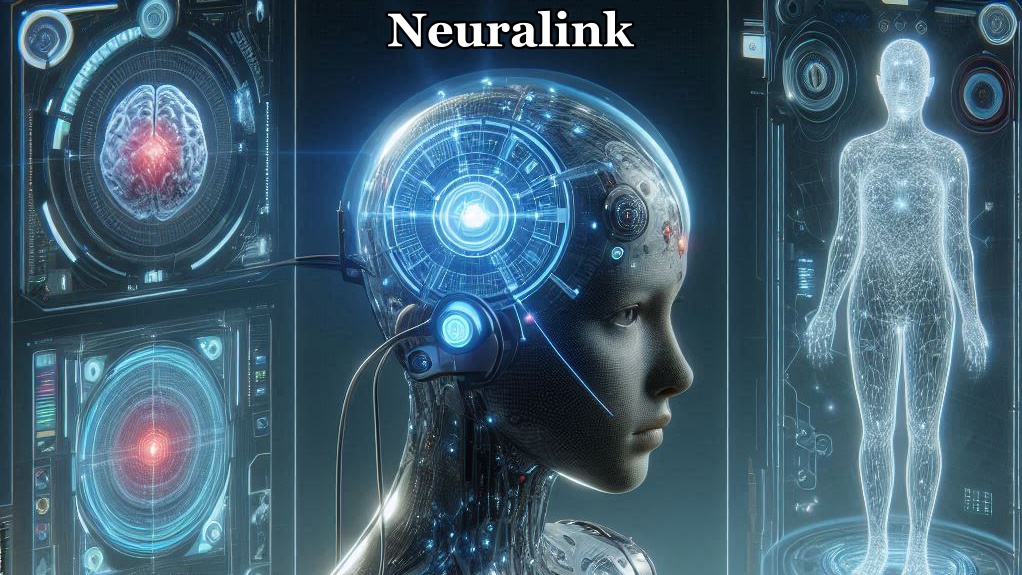In a groundbreaking exploration of human-machine symbiosis, Neuralink—Elon Musk’s brain-implant company—has just unveiled its ambitious roadmap for restoring and enhancing human vision. Dubbed Blindsight, this technology promises to give sight back to the blind—and potentially deliver superhuman visual abilities.
Introduction 🤖
Neuralink is taking us from science fiction into science fact. Their latest update reveals that the first human trial of Blindsight is planned for 2026, marking a major leap forward 🧠. But that’s just the beginning.
This post will cover:
- What Blindsight is
- Neuralink’s roadmap (2026–2028)
- How it works technically
- Ethical concerns and risks
- Real-world impact so far
- What’s next

What Is Blindsight?
Blindsight is a brain implant that stimulates the visual cortex directly, bypassing damaged or missing eyes and optic nerves. Rather than relying on vision through natural optics, the system uses:
- Camera‑equipped glasses to capture visual data
- A smartphone to interpret that image
- The S2 implant to stimulate neurons in the visual cortex via tiny electrical pulses
This tech is grounded in extensive monkey trials, earning an FDA Breakthrough Device designation in September 2024.
Neuralink’s Roadmap for Vision Restoration
2025–2026: First Human Trials
- Late 2025 / early 2026: First human receives Blindsight implant
- Aim: Enable someone blind from birth or with both eyes/optic nerves lost to regain low-resolution vision like “Atari graphics”
2027: Multi‑Implant Integration
- Neuralink will integrate vision, speech, and motor implants in one person
- The system will expand to 10,000+ channels for advanced mind-device communication
2028: Full Brain Interface
- Ambition to scale to 25,000+ electrodes for whole-brain access
- Aims for broad AI connectivity and direct mind-to-device symbiosis

How Blindsight Works (Simplified)
Hardware Setup
- Users wear sleek camera-equipped glasses, connecting wirelessly to a smartphone
- The smartphone converts images to electrical signals
- The S2 implant, featuring larger electrodes and low impedance, stimulates the visual cortex
Targeting the Visual Cortex
- Initial implants reach only the central vision area (2–3 mm depth)
- To stimulate wider fields, Neuralink threads must penetrate the calcine fissure up to 40 mm deep—a key surgical innovation
Calibration and Output
- Initially, patients see a few white dots on a black background
- Dots are mapped via patient feedback (“I saw a light here”)
- Over time, resolution improves and could even exceed normal human vision
Broader BCI Goals Beyond Vision
Neuralink isn’t just aiming for sight. Their other major targets include:
- Telepathy – reading and typing thoughts
- Telekinesis – controlling robotic limbs
- Mood and Memory – modulating limbic system functions for emotional health
They’ve already implanted N1 telepathy devices in five humans, including ALS and spinal-cord injury patients, enabling cursor control, communication, gaming, and CAD design.
Real‑World Impact So Far
Early Users and Life Changes
- Noland Arbaugh (tetraplegic): regained cursor control, played games, encountered thread retraction issues later stabilized via software
- “Brad” (ALS patient): regained speech ability, left home independently after six years
These successes demonstrate real-world utility even before Blindsight launches.
Technical Challenges & Ethical Concerns
Low Resolution vs. Expectations
- Experts caution that early Blindsight results might disappoint: few dots, low detail
- FDA emphasizes designation is preliminary—not proof of efficacy or safety
Depth Access & Robot Precision
- Implanting threads 40 mm deep is groundbreaking—and risky
- Neuralink’s surgical robot, imaging suite, and flexible threads enable unprecedented precision
Privacy & Autonomy
- As mind-reading and writing tech advances, society must address:
- Privacy: who controls neural data?
- Consent: can usage be voluntary?
- Security: risk of hacks or misuse

What’s Next for Neuralink
- 2026: Blindsight trials expand globally (US/UK/Canada/UAE)
- Trademark filings indicate plans for a suite of products: Telepathy, Telekinesis, Blindsight
- Funding injection: $650M raised, valuation ~$9B, fueling R&D
SEO‑Targeted Summary (Bullet Points)
- What is Neuralink Blindsight? A visual prosthesis giving sight to the blind via brain stimulation
- When is the first human trial? Late 2025–early 2026
- How does it work? Camera glasses → smartphone → S2 implant → visual cortex stimulation
- Will it restore full vision? Not yet—initial resolution like Atari graphics; improvement over time
- Is it safe? Designated Breakthrough Device; human trials pending
- What are future goals? Multi-implant systems (vision, speech, motion) and eventual direct AI interconnection
The Big Picture
Neuralink is working toward a whole-brain BCI, applying Moore’s Law (~2× performance every 2 years) to neural interfaces. From simple cursor control to full AI integration, the company positions itself as the bridge between human cognition and digital intelligence.
This raises one of the greatest questions of our time: how do we balance unprecedented capability with ethical responsibility?
Ethical and Societal Considerations
Privacy & Security
- Brain data equals personal narrative—who can access it?
- Security protocols need to match top cybersecurity standards.
Regulation & Consent
- Trials follow strict oversight (FDA, international bodies)
- Ongoing appeal for transparency and informed patient consent
Equity and Access
- These technologies are expensive. Who gets access?
- Will only wealthy individuals benefit, or will there be equitable distribution?
What This Means for Humanity
Neuralink’s ambitions raise profound implications:
- Medical: Could revolutionize rehabilitation for paralysis, blindness, cognitive disorders
- Human Augmentation: Superhuman vision, telepathy, AI integration
- Societal: Must redefine privacy, identity, and ethics
As Musk himself stated: progress will be “slow, highly regulated, and visible every step of the way.”
Conclusion
Neuralink’s Blindsight implant marks a tipping point in neurotechnology—offering real hope to the blind for the first time, while laying the foundation for transformative advances in brain‑machine symbiosis.
Whether you’re an enthusiast, skeptic, or futurist, this journey raises critical questions:
Are you ready for a world where humans can see with their brains and think with machines?
Let Us Know
- What excites you most: vision restoration or superhuman potential?
- What worries you: ethics, privacy, or safety?
- Will you embrace BCI technology or proceed with caution?
Share your thoughts below, and help shape the future of human augmentation.
FAQs
1. What is Neuralink’s Blindsight implant?
Blindsight is a brain-computer interface (BCI) developed by Neuralink to restore vision to people who are blind or have no functional eyes. It sends visual data directly to the visual cortex using a chip implanted in the brain.
2. How does Blindsight work?
Blindsight uses camera-equipped glasses to capture visual information. This data is processed by a smartphone and wirelessly sent to the Neuralink S2 implant, which stimulates the visual cortex using electrical impulses, creating visual perception without eyes.
3. When will the first Blindsight human trial begin?
Neuralink plans to begin human trials for Blindsight in 2026. This will be the first time a person receives visual input directly into the brain using this system.
4. Who is eligible for the Blindsight implant?
The initial candidates will likely be people who are completely blind, particularly those with non-functioning eyes or damaged optic nerves. Neuralink will select participants through clinical trials under regulatory supervision.
5. Will the Blindsight implant restore full vision?
Not initially. Early versions of the Blindsight system will deliver low-resolution “pixelated” vision, comparable to basic dots on a screen. However, Neuralink aims to improve resolution over time, potentially surpassing normal human eyesight.
6. What is the Neuralink S2 implant?
The S2 implant is a newer version of Neuralink’s brain chip, specifically designed for stimulation rather than just recording brain signals. It uses larger electrodes to send visual information into the brain, enabling visual perception in blind individuals.
7. How deep does Neuralink implant the electrodes in the brain?
To stimulate a wide field of vision, Neuralink’s threads penetrate up to 40mm (1.5 inches) into the visual cortex, which is significantly deeper than typical brain implants.
8. Is Blindsight different from other brain-computer interfaces?
Yes. Blindsight goes beyond traditional BCIs by offering direct input into the brain. Most other BCIs focus on reading brain activity, but Blindsight actively writes information into the brain, providing sensory data.
9. Is Neuralink’s Blindsight FDA approved?
The device has received Breakthrough Device designation from the U.S. FDA, which helps accelerate its development, but it is not yet fully approved. Full FDA approval will come after successful clinical trials.
10. Can people with the Blindsight implant see color or detail?
Initially, the vision will be limited to simple white dots on a black background. The system is expected to improve over time, but color vision and fine detail will take years of refinement.
11. Will Blindsight give users superhuman vision?
Eventually, yes. Elon Musk has stated that Neuralink’s long-term vision is to enable users to see in infrared, ultraviolet, and other spectrums beyond normal human capability—turning sensory disability into enhanced perception.
12. Is the Blindsight system invasive or dangerous?
Blindsight involves brain surgery using a robotic system developed by Neuralink. While any brain surgery has risks, Neuralink reports that all human surgeries to date have gone according to plan. Long-term risks are still being evaluated.
13. What makes Neuralink’s approach unique?
Neuralink’s robotic thread implantation, custom-designed electrodes, and the ability to reach deep, complex brain regions set it apart. Other BCIs can’t access the deep folds of the brain like the calcine fissure in the visual cortex.
14. What else is Neuralink working on besides vision?
Other Neuralink applications include:
- Telepathy: control digital devices with your thoughts
- Telekinesis: control robotic limbs
- Cognitive regulation: treat mental health and memory issues
All aim to build a whole-brain interface for full digital-human integration.
15. When will Blindsight be available to the public?
If trials go well, limited availability may begin by 2028 or later. Widespread public access will depend on regulatory approvals, safety testing, and scaling manufacturing.
Read More:
- Why Is SpaceX Starship So Difficult to Get Right? Is this even possible?
- Why Tesla’s Q3 could be one of its biggest quarters in history
- Tesla Model 3 ranks as the safest new car in Europe for 2025, per Euro NCAP tests
- Tesla UK sales see 14% year-over-year rebound in June: SMMT data
- Tesla Full Self-Driving testing continues European expansion: here’s where


My daughter is totally blind to do a hainess crime. She would like to volunteer for your neuralink study for blindness. How does she go about entering the study?
My 36 year old Son was injured in a terrible accident resulting in total blindness one year ago. His visual cortex, brain, globe are all intact, unfortunately his optic nerve does not have blood flow, however, it too is intact. Would he be a candidate for the study?
please reply to
geris132@aol.com